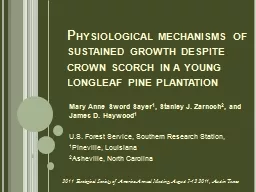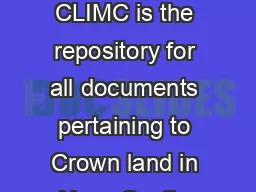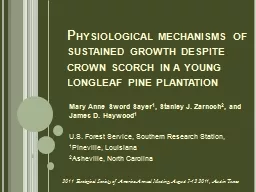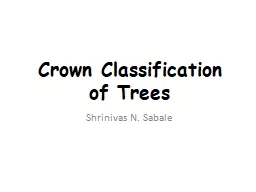PPT-Physiological mechanisms of sustained growth despite crown
Author : pasty-toler | Published Date : 2017-07-30
Mary Anne Sword Sayer 1 Stanley J Zarnoch 2 and James D Haywood 1 US Forest Service Southern Research Station 1 Pineville Louisiana 2 Asheville North Carolina
Presentation Embed Code
Download Presentation
Download Presentation The PPT/PDF document "Physiological mechanisms of sustained gr..." is the property of its rightful owner. Permission is granted to download and print the materials on this website for personal, non-commercial use only, and to display it on your personal computer provided you do not modify the materials and that you retain all copyright notices contained in the materials. By downloading content from our website, you accept the terms of this agreement.
Physiological mechanisms of sustained growth despite crown: Transcript
Download Rules Of Document
"Physiological mechanisms of sustained growth despite crown"The content belongs to its owner. You may download and print it for personal use, without modification, and keep all copyright notices. By downloading, you agree to these terms.
Related Documents














